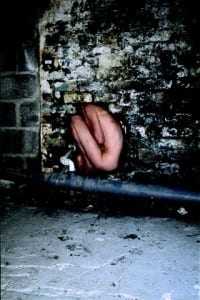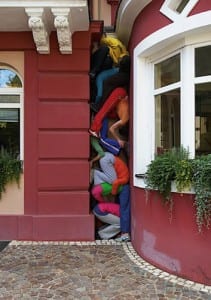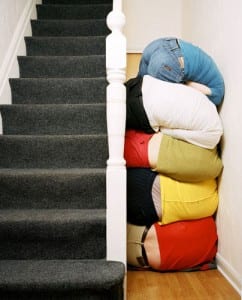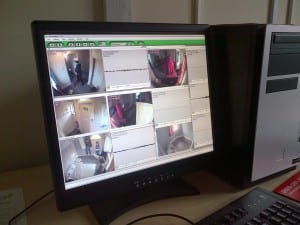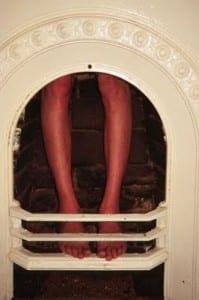We created a teaser for the public to see to advertise our performance. We decided to use placards for the trailer to not reveal too much about the performance and to demonstrate a brief idea of the piece. With this, we used quotes from Pearsons “Site Specific” ((Pearson, Mike 2010, Site Specific Performance, Palgrave)) and also definitions from the Oxford dictionary so who ever watches to teaser will get a grasp of our concept.
Creating the trailer did come with its difficulties as we were unable to cut and crop shots from the CCTV recording system as we had no kind of advance technology. We explored the full use of the CCTV system and played around with using the different camera angles.
One more trailer we made was an Hangman game trailer which eventually read “West Parade”. This enabled the CCTV group and I explore with becoming technical with the equipment we are using. Also this trailer revealed more to the audience.
“CCTV surveillance which naturally invites comparisons with bentham’s nineteenth-century design for the new model prison, with its central observation tower, allowing the augraads to see everything without ever being seen themselves” ((Norris, Clive. Armstrong, Gary, 1999 The Maximum Surveillance Society; The Rise of CCTV. Berg. p91))
After exploring with the CCTV and trailers, ideas were formed for this to be used during the performance. We wanted to focus on giving the audience a message which they could leave the house with. During the performance we will hide various placards which will only make sense when the audience arrive in the CCTV room. As the screen is split into 9 shots of the house, we thought it would be interesting to have relevant quotes stuck around the house and it would all make sense when unravel only in our room. “Explicitly provoked the reader’s self-reflective awareness of relationships between text, space and eye movement” ((Kaye, Nick, 2007 Multi Media; Video Installation Performance Routledge p101)) . Gillian Wearing, a photographer, uses placards in her work collection called “Signs that Say What You Want Them To Say and Not Signs that Say What Someone Else Wants You To Say”. She expresses her thoughts and feelings by using members of the public to hold her signs up. This would again revival what we have witnessed and why we have been watching the audience member throughout the performance.

To expose the hidden message, there will be pre-recorded video which follows a person on the screen as they take a tour of the house, uncovering the messages from room to room. However, we would be using the CCTV blind spots and the CCTV 9 grid layout to create the sense of the person going from room to room in the order of the 9 grid on the CCTV screen.
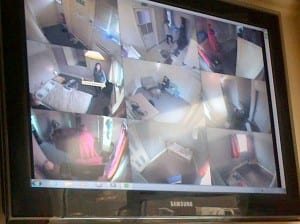
The pre-recorded performance was influenced by Fiona Templeton and Michael Ramtomski’s Recognition performance. This piece largely influenced out idea as it involves “audience participation” were audience discomfort was at risk, “interaction” and “opportunity to take part” ((Templeton, Fiona May 2006, Audience Interaction: A Presence Workshop. accessed 05/03/2013 http://presence.stanford.edu:3455/Collaboratory/1107)) . We wanted to play on these three concepts to for the audience to feel as they have created a relationship without them seeing us apart from on the prerecording. Again, the audience will fully understand all of your work when they enter the CCTV room.
